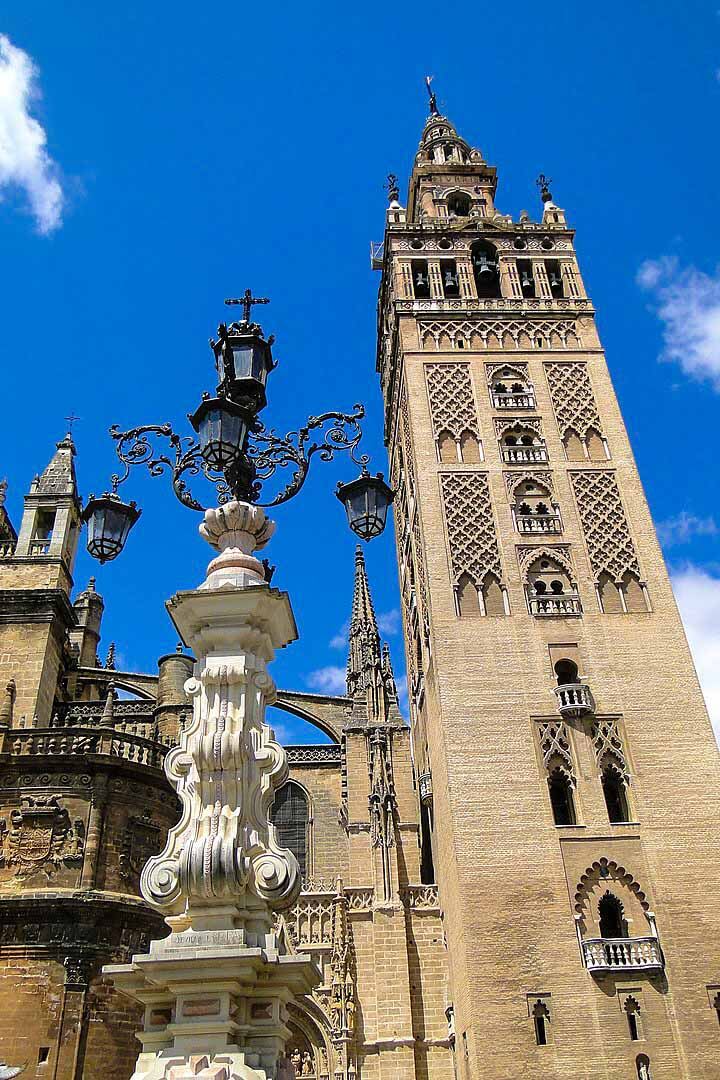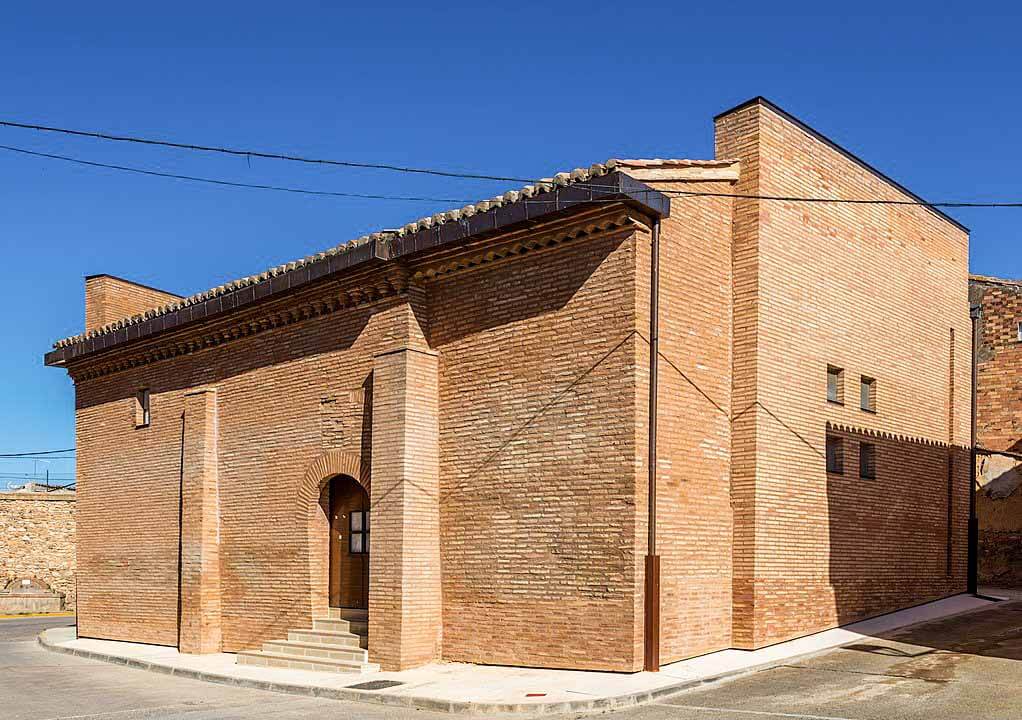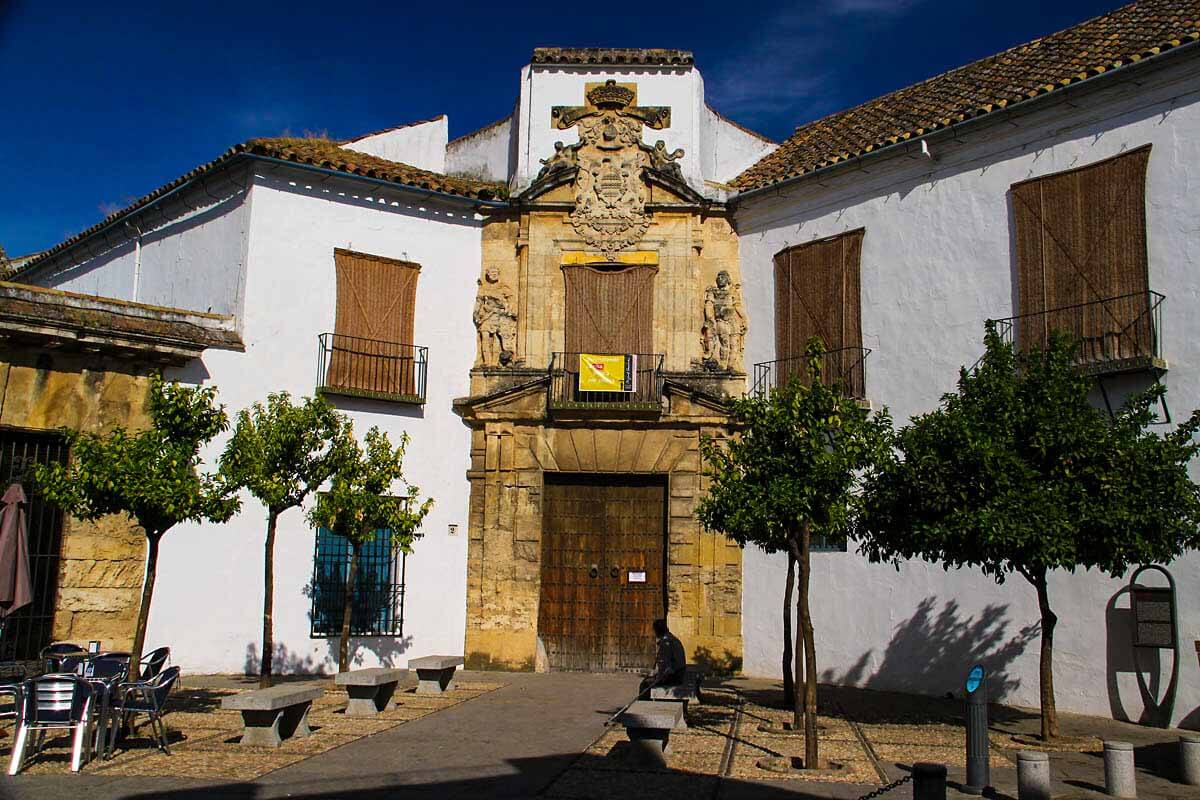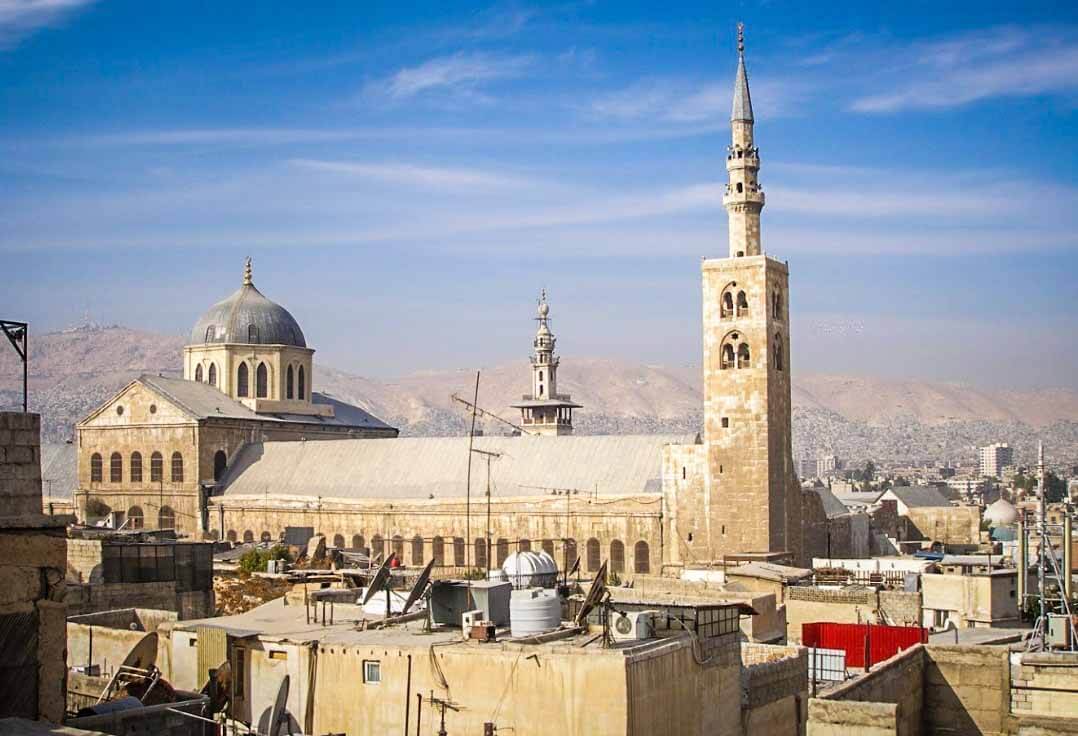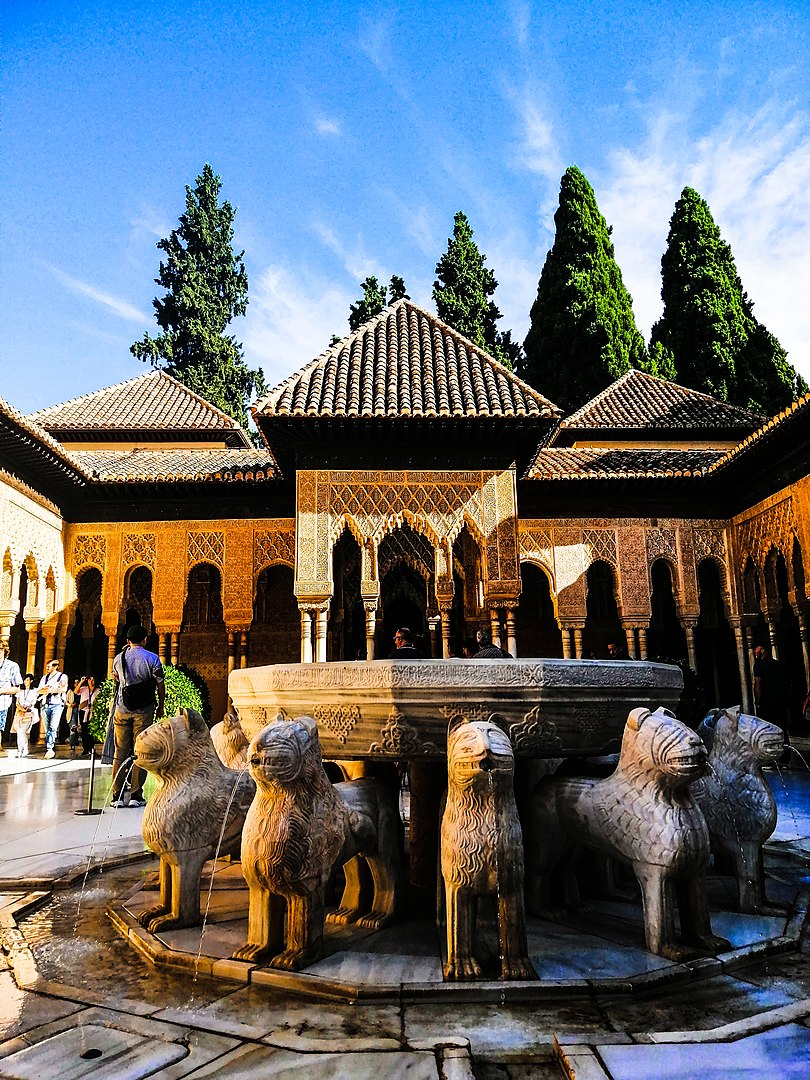Seville, Spain
Coordinates: 37.386190, -5.992615
The Giralda is the bell tower of Seville Cathedral in Seville, Spain.
It was built as the minaret for the Great Mosque of Seville in al-Andalus, Moorish Spain, during the reign of the Almohad dynasty, with a Renaissance-style top added by the Catholics after the expulsion of the Muslims from the area.
Dating from the Reconquest of 1248 to the 16th century and built by the Muslims.
The Giralda was registered in 1987 as a World Heritage Site by UNESCO, along with the Alcázar and the General Archive of the Indies.
The tower is 104.1 m (342 ft) in height and remains one of the most important symbols of the city, as it has been since the Middle Ages.
The tower is the only remaining part of the mosque that stood here around the 10th century. The carvings are partly Arabic in style.
History of Mosque
The mosque was built to replace the Umayyad mosque of ‘Addabas, since the congregation had grown larger than the modest prayer hall could accommodate.
It was commissioned in 1171 by caliph Abu Ya’qub Yusuf.
From the beginning, craftsmen from all over Al-Andalus and the Maghrib were enlisted in the mosque’s planning, construction, and decoration, and the caliph himself was highly invested in the process and was said to have visited the site daily.
By 1176, the mosque was complete, save for the minaret; however, Friday prayer was not held there until 1182, and it was not until 1184 when construction even began on the minaret.
Greatness of Great mosque of Seville
Before its partial destruction in a 1356 earthquake, the mosque was comparable in size to the great mosque of Cordoba and its walls faced the cardinal directions with mathematical preciseness.
Building of the Minaret
Construction stalled once again in 1184 with the death of the architect, and a month and a half later, the caliph, who died while commanding the Siege of Santarém.
It was picked up four years later by the caliph’s son, Abu Yusuf Yaqub al-Mansur, aided by a group of architects and designers, including Sevillan architect Ahmad ibn Basuh and Sicilian architect Abu Layth Al-Siqilli.
The minaret was built using both local bricks and recycled marble from old Umayyad monuments.
On 10 March 1198, the tower was completed with the addition of four precious metal spheres (either gold or bronze) at the tower’s peak to commemorate al-Mansur’s victory over Alfonso VIII of Castile, which had taken place four years prior.
The Giralda
The minaret, which still stands as the Giralda, contains a series of ramps winding around the perimeter of several vaulted chambers at the tower’s core.
The decorated facades and windows on the tower are stepped to match the ramps in order to maximize light to the chambers inside.
This exterior brick decoration was mainly done by ‘Ali al-Ghumari, a Berber craftsman who also did repair work on the interior.
The main gateway, still in existence, contains a metal-plated door with geometric decoration and floral knockers.
Conversion to cathedral
After Seville was recovered by the Christians in 1248 during the Reconquista, the city’s mosque was symbolically converted into a cathedral.
This involved changing the liturgical orientation, closing and screening off exits and archways, and creating several small family chapels.
This structure was badly damaged in a 1356 earthquake, and by 1433 the city began building the current cathedral.
Local stone to build with was scarce, and there were few skilled stonemasons in the area, so timber and stone had to be shipped from overseas.
Construction took 73 years and was completed in 1506.
Buildings inspired by the Giralda
Many towers have borrowed from the Giralda’s design throughout history.
Several church towers in the province of Seville also bear a resemblance to the tower, and may have been inspired by the Giralda.
These towers, most notably those in Lebrija and Carmona, are popularly known as Giraldillas.
Numerous replicas of the Giralda have been built in the United States, mostly between 1890 and 1937:
The second Madison Square Garden in New York City, designed by Stanford White, built in 1890
A replica in the Country Club Plaza in Kansas City, Missouri
The clock tower of the Ferry Building in San Francisco, completed in 1898
The clock tower of the Railroad Depot in Minneapolis, destroyed by wind in 1941
The Freedom Tower in Miami, Florida, built in 1925
The Biltmore Hotel in Coral Gables, Florida, built in 1926
The Wrigley Building in Chicago, built in 1920
The Terminal Tower in Cleveland, built in 1930
The clock tower at the University of Puerto Rico’s Río Piedras campus, built in 1937
Seven Sisters (Moscow), seven Soviet-era skyscrapers in Moscow, Russia
Palace of Culture and Science in Warsaw, Poland
Know This
The majority of the climb is via ramps to each level and is certainly easier than steps, although there is a short length of steps right at the top.










